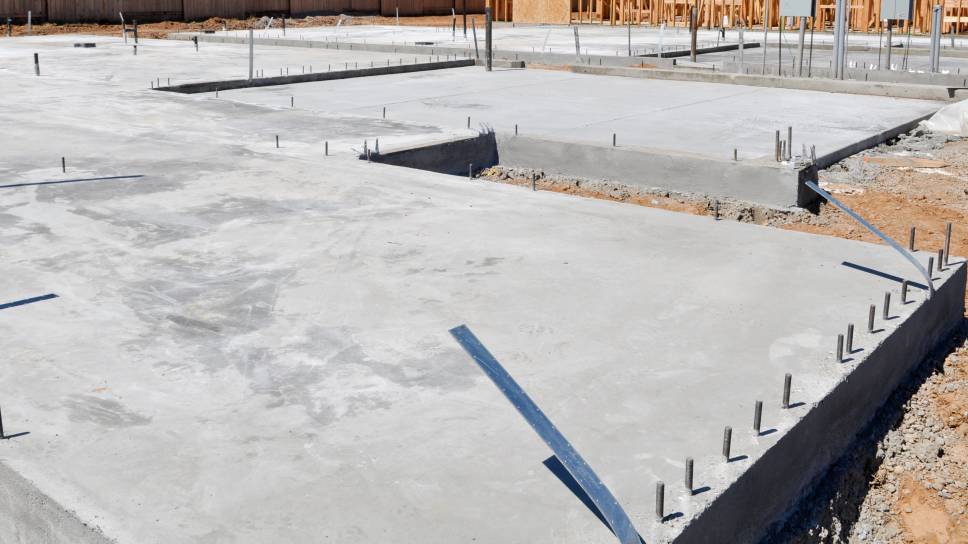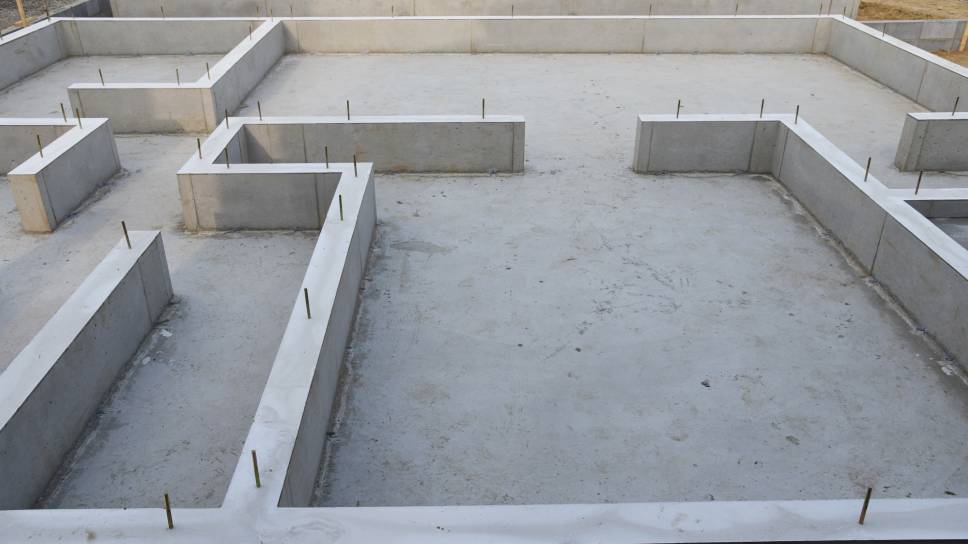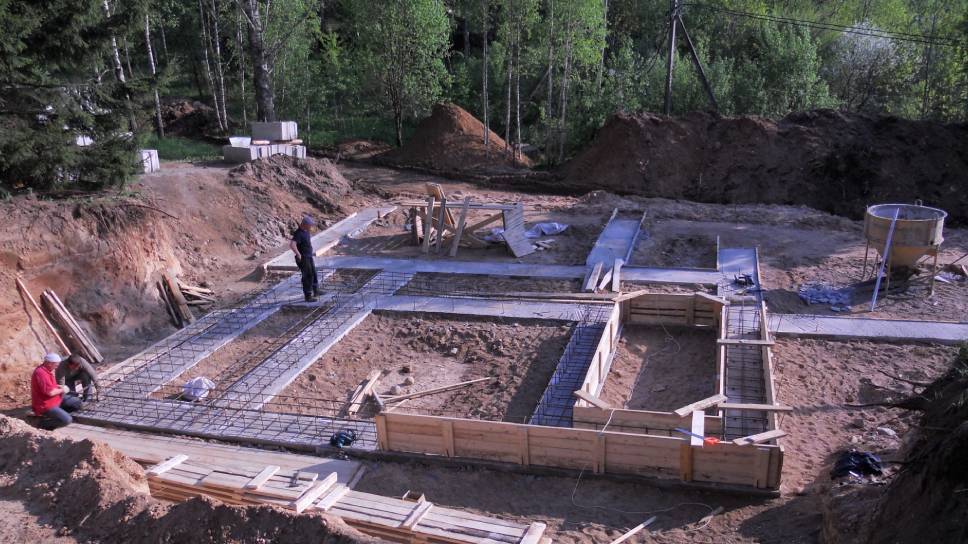How to build a proper foundation for a house?
It is a question with no simple answer. This is because there are many factors taken into account by an expert designing the foundations for a house. The most important of these are:
- Size of the building (its area, number and height of floors, etc.).
- Shape of the building and location of some of its elements, for example pillars, chimney, terrace, garage, etc.
- Construction method and type of materials used.
- Type of heating installation.
- Provision of water supply and sewage systems.
- Ground conditions.
The last factor is crucial as it is the ground conditions that - to a large extent - determine the shape and sequence of works during the foundation process. This issue is particularly important for those who decide on ready-made house designs. For each such building, foundations should be basically designed from scratch, depending on the place where the house is to be built - check more details on the typesof foundations.
Whether you opt for a long-strip footing or a slab foundation, you will need to get the plot of land ready before works can commence. Here is a list of jobs to remember:
- Fencing the construction site.
- Hardening/paving of the access road, if necessary.
- Provision of back-up facilities such as toilets, temporary storage for equipment or building materials, etc.
- Humus removal/ground levelling and other earthworks.
- Setting out the building axis and the foundation outline, and placing a bench mark. This work is carried out by a surveyor.
- Installation of temporary connections.
- Placing an information board.
Not before all these preparations are completed can you begin the most important stage of house construction - that is pouring its foundations.

Construction of a standard long-strip footing for a single-family house
The construction of the long-strip footing and the spot footing begins, of course, with digging a trench. Its width depends on the properties of the soil.
If the ground is loose, the trench widens slightly upwards so that wooden or slab formwork can be used. If the ground is compact (for example hard clay), the walls of the trench are left vertical. In this case, there is no need to provide a formwork. The bottom of the excavation must be compacted and the walls levelled.
The bearing capacity of the soil also influences presence of the lean concrete pad.
- If the soil is non-slumping and cohesive, there is no need to use lean concrete at the bottom of the footing. It is sufficient to place a suitable foil in the excavation and roll it up so that the water from the concrete mixture does not soak into the walls of the excavation.
- If the soil is loose, a base course of lean concrete must be laid even after the bottom of the excavation has been hardened. The formwork of boards or panels is installed 24 hours after the base has been poured. Of course, the entire structure must be installed very precisely and solidly - the concrete mixture is not light, so no part of the formwork should be displaced when it is poured.
Once the walls and possibly the bottom of the excavation have been secured, reinforcement beams must be installed. These are usually constructions consisting of four steel bars connected with steel stirrups. All individual beams must overlap, for example at their corners. Information on the type of bars, their diameters and ways of joining should be included in the design documentation. The standard diameter of main bars is 12 mm, while the diameter of stirrups is 6 mm. It is important that the bars do not lie directly on the bottom of the excavation - for example on a base of lean concrete - but are placed on stable shims.
The concrete is then poured. Before this operation, the formwork can be moistened, or possibly coated with an adhesive preparation. A good solution is to compact the concrete mass, for example with a vibrator, which will remove excess air from the concrete and thus increase the life of the foundation and reinforcement. The more efficient this operation is, the better as the footing should dry evenly. It is not a good idea to stop work for several hours.
Finished foundations should be watered regularly, sometimes even for a fortnight. For the first few days even 5 times a day and once a night. Later on the amount of water supplied to the drying foundations is gradually reduced. It is best to discuss the issue of watering the concrete with the site manager.
When the footing is already dry, the potential formwork is removed and its upper surface is insulated with roofing paper or bitumen. Then the foundation is backfilled. If necessary, for example when the ground water level is high, the drainage is installed. On the long-strip footing a foundation wall is erected - monolithic, made of hollow bricks or concrete blocks - which is then thermally insulated, for example with PUR foam.

Construction of a long-strip footing for a single-family house
When constructing a ground slab, one should very strictly adhere to the provisions of the design. This type of construction is a kind of "trap" for inexperienced owners and contractors. This is because the order in which individual layers of the slab are laid, the thickness of those layers or the type of hydro- and thermal insulation depend very much on prevailing ground conditions, location of the basement, or the general shape of the building. For this reason, the following list should be considered purely indicative.
- First, the trench is dug to a depth of approx. 50 cm below ground level.
- Then the substructure is compacted - it can be sand, or a mixture of sand and fine gravel. The sub-base is usually 15 to 20 cm thick. Before it is compacted, the plumbing pipes are placed in the sand. It happens that at this step of works a band of styrodur boards is laid, which is also a stay-in-place formwork - this material will serve as a thermal insulation of the board edges.
- Sometimes a waterproofing membrane is placed on top of the compacted sand and a layer of lean concrete is placed on top of it. However, this is not always necessary.
- Then the thermal insulation is laid. The best solution here is closed-cell PUR foam, which has excellent thermal insulation properties, does not form thermal bridges and withstands static and dynamic loads very well. There is therefore no risk of deformation due to the weight of the board.
- The thermal insulation may be additionally covered with foil or a special waterproofing layer.
- Then the top and bottom reinforcement is placed on top of the thermal insulation. If necessary, the underfloor heating pipes are also placed. The whole thing is poured with concrete, which is then compacted using a vibrator.
- If there is underfloor heating directly in the slab, it is then covered with flooring. If not, an additional layer of floor polystyrene can be placed on the slab, followed by a screed with underfloor heating pipes and finally the floor. Here there is full choice of any kind.
A reinforced concrete slab is most often used as a foundation for a single-family house. It is an excellent option in case of difficult ground conditions. However, it is a solution that should only be designed by experienced professionals. This is due to the fact that when designing a ground slab it is much easier to make a mistake than when designing or building a footing.

 This website uses cookies. By using this website, you consent to the use of cookies in accordance with your browser settings.
This website uses cookies. By using this website, you consent to the use of cookies in accordance with your browser settings.